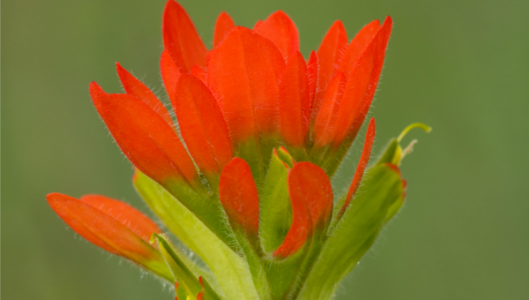Polk County’s Most Wanted — Plant
Published 10:54 am Tuesday, May 26, 2015
In a joint effort to expand the knowledge and understanding of the flora and fauna of Polk County, the Pacolet Area Conservancy (PAC) and botanist David Campbell need your help in locating this month’s “Polk County’s Most Wanted-Plant,” Indian Paintbrush (Castilleja coccinea), a unique and beautiful plant that blooms during the month of May.
The genus Castilleja contains only a single species in North Carolina, but there are many additional species of Castilleja that are found in western North America. Castilleja belongs to the Broomrape family, Orobanchaceae.
A colorful plant adorned with red, yellow and green, Indian Paintbrush has a preference for the types of basic soils that are not uncommon within Polk County. Preferred habitats are always sunny and include sites that can be quite wet (even around waterfalls) and even dry fields and open glades. Indian Paintbrush ranges from four inches in height to just over two feet. The colorful ‘flowers’ are actually the calyces (singular is calyx) that serve to attract pollinators (often Hummingbirds) drawn in by the red coloration of the ‘flower.’
An interesting aspect about Indian Paintbrush is that it has a hemiparasitic lifestyle. Hemiparasites are plants that are capable of photosynthesis, but also require a host plant to complete development. Host plants utilized by Indian Paintbrush often include various species of grasses, such as Little Bluestem. The life cycle typically requires two years to complete, with the first years spent as a small rosette of leaves close to the ground. Flowering occurs during the second year of the plant’s life.
Indian Paintbrush has a wide distribution throughout eastern North America and can be quite numerous at certain localities; however, fire suppression and the historic loss of large grazing mammals has rendered this species uncommon to rare in some parts of its range.
There are several reports of Indian Paintbrush from Polk County, but none are recent. Keep an eye out for this species in open grassy areas, streamside edges, power line rights of way, and rocky, open situations that receive large amounts of sunlight. Plants are conspicuous and readily seen from a distance.
If you think that you have seen this plant, know where it might be located, or know of a likely habitat for it, please contact PAC at 828-859-5060, or e-mail comments, questions, or photos to landprotection@pacolet.org.
PAC is a 501(c)(3) non-profit conservation organization (land trust) founded in 1989 to protect and conserve natural resources with emphasis on the lands and waterways with scenic, ecological, and agricultural significance in the North Pacolet and Green River watersheds. PAC works with area landowners to ensure the long-term protection of their property through voluntary conservation easements (agreements) which enable landowners to maintain ownership of their property, preserving precious natural resources (open lands, forests, wildlife habitat, scenic vistas, farmland, stream banks, etc.), and potentially obtain significant federal, state, and local tax benefits. PACs vision is a community living and growing in harmony with our natural resources and or goal is to provide a legacy that will endure and be valued by generations to come. PAC works diligently to provide leadership to encourage conservation and provide education programs emphasizing native species appreciation and responsible land use practices to help – save the places you love.
– Submitted by Pam Torlina
Photo: Indian Paintbrush (Castilleja coccinea)






